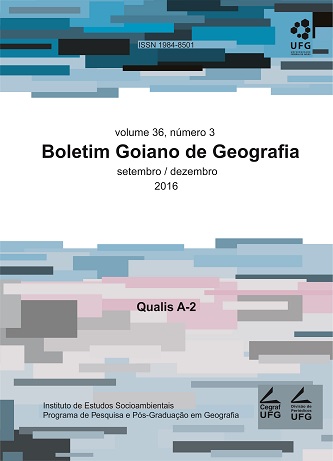SPATIAL DISTRIBUTION OF INTESTINAL PARASITISM IN USERS OF SISTEMA ÚNICO DE SAÚDE, IN LIMOEIRO DO NORTE, CEARÁ, BRAZIL, BETWEEN 2009 AND 2014 - DOI 10.5216/bgg.v36i3.44559
DOI:
https://doi.org/10.5216/bgg.v36i3.44559Abstract
The enteroparasitism is a global scale problem having a close relation with the environmental conditions, and keeping inter- and intra-regional differences. The Geographic Information System (GIS) can help the planning that aims to control intestinal parasites. The objective of this research was to locate the prevalence of endoparasitosis in users of the Health Unified System (Sistema Único de Saúde – SUS) in Limoeiro do Norte, Ceará, Brazil. Secondary data from the Regional Hospital Dr. Deoclécio Lima Verde from the years 2009-2014 were used, executing descriptive analysis by statistical techniques with a confidence interval of 95%. The prevalence has been reduced over the years (p < 0.01); women are the most affected (p < 0.05 ); there was a higher protozoa infection prevalence (p < 0.01 ); the event is more frequent among those who inhabit the rural area (p < 0.01 ), in particular, patients living in the territory around Health Basic Unit (Unidade Básica de Saúde - UBS) called Serra (p < 0.01). The use of GIS, through the production of a thematic map, proved to be of great value to the identification of risk areas, being therefore a tool that can assist management in conducting planning that seeks to control this infection. Keywords: intestinal parasites, geoprocessing, risk areas.Downloads
Downloads
Published
How to Cite
Issue
Section
License
Authors will not receive any payment for publishing their work in Boletim Goiano de Geografia. Therefore, they must grant all rights to the journal. However, they are entirely and exclusively responsible for the published contents, and editors are free to make corrections or adjustments to texts in conformity with publication guidelines.







